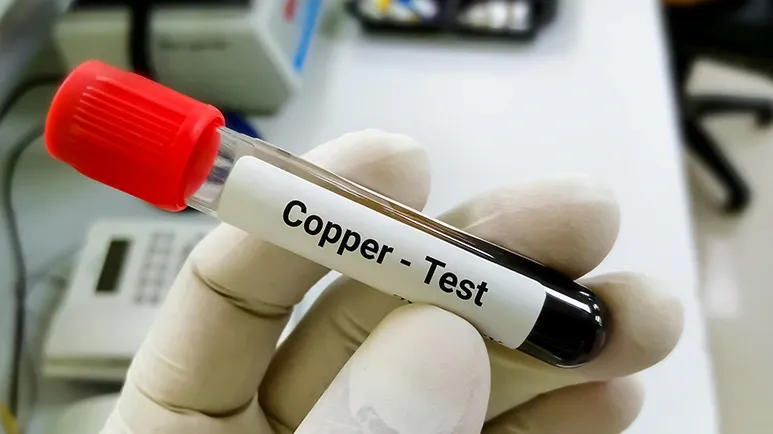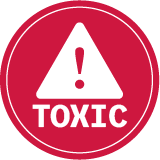This Overlooked Condition Is on the Rise in Pets
If your dog or cat seems healthy, you might not think this liver disease is a concern. Early symptoms are subtle, however, and by the time visible signs develop, irreversible damage may already be occurring. Discover how to spot the early signs.

STORY AT-A-GLANCE
- Copper storage disease, once thought rare, is increasingly recognized in both dogs and cats, with early signs often subtle or mistaken for common digestive or behavioral issues
- Excess dietary copper and inherited metabolic defects can cause toxic copper buildup in the liver, leading to inflammation, fibrosis, and irreversible organ damage if left untreated
- At-risk dog breeds include Labradors, Dobermans, and Bedlington Terriers among others. Some cats can have primary copper storage disease (called primary copper-associated hepatopathy) that is genetic and seems to be similar to Wilson’s disease in people, while cats with other liver issues may develop secondary copper accumulation without clear genetic risk factors
- Diagnosis involves a combination of bloodwork, imaging, and often a liver biopsy; early detection is key to preventing long-term liver damage and improving treatment outcomes
- Management may include a copper-restricted diet, chelation therapy, zinc supplementation, or antioxidant support, offering many pets the chance for extended, high-quality lives with ongoing care
When you bring a pet into your life, you do everything you can to keep them healthy and happy. You choose nutritious food, schedule regular veterinary checkups, and provide a loving home. But what if something harmful was silently building up in your pet's body — something you couldn't see, feel, or predict until it was too late?
Copper storage disease (CSD), also known as copper-associated hepatopathy, is one such condition. Though once considered rare, this life-threatening disorder is now being diagnosed with increasing frequency in both dogs and cats. It directly affects the liver, and its early symptoms are often subtle or mistaken for other common ailments. Without timely diagnosis and proper treatment, copper storage disease can lead to severe liver damage and, ultimately, organ failure.
What Is Copper Storage Disease?
Copper is a trace mineral that plays a vital role in your pet's health. It supports a range of functions, including the formation of red blood cells, maintenance of the immune system, and the proper functioning of enzymes involved in metabolism.1 Your pet absorbs copper from their food, and their liver helps regulate the balance by storing what is needed and eliminating the rest.
However, in pets affected by CSD, this process breaks down. The liver is unable to properly excrete excess copper. As a result, copper accumulates within liver cells to toxic levels. Over time, this buildup leads to inflammation, scarring (fibrosis), and irreversible liver damage (cirrhosis).2
While copper is essential in small amounts, too much of it becomes dangerous. The toxic effects of accumulated copper begin slowly, often unnoticed, and progress quietly until the damage becomes severe. By the time your pet shows outward signs of illness, their liver may already be in distress.
Why Is Copper Storage Disease Becoming More Common?
Until recently, CSD was considered a rare condition in pets, particularly in cats. However, there is growing awareness among veterinarians and researchers that it may be more widespread than once thought. Several factors are contributing to the increase in diagnoses:
- Changes in pet food formulations — Many commercial pet foods now contain added copper, sometimes at levels significantly above the minimum requirements.3 Unfortunately, there is no maximum recommended limit for copper in pet food. This means some products may contain more copper than is safe for pets, especially those who are genetically predisposed to retain it.
- Improved diagnostic tools — Veterinarians are now more likely to include copper storage disease in their list of possible diagnoses when pets show signs of liver trouble. Advances in diagnostic testing, such as liver biopsies and genetic screening, have made it easier to identify the condition early, before irreversible damage occurs.
- Greater awareness of genetic risk — Certain dog breeds are known to be genetically prone to copper retention. As more breeders and veterinarians become aware of this risk, they are taking steps to screen for the disease, leading to earlier and more frequent diagnosis.
Which Pets Are Most at Risk?
CSD can affect any dog or cat, regardless of age or breed. However, some are more likely to develop the condition due to genetic or environmental factors.
In dogs, the disease is most commonly linked to inherited genetic mutations that impair the liver's ability to eliminate copper. Breeds with a higher predisposition include:4,5
- Bedlington Terriers
- Doberman Pinschers
- Labrador Retrievers
- Dalmatians
- West Highland White Terriers
- Welsh Corgis
- Anatolian Shepherds
- Skye Terriers
- Keeshonds
- American Cocker Spaniels
- Clumber Spaniels
- English Springer Spaniel
These breeds are more likely to develop CSD at a young age, sometimes long before signs appear. It is important for owners of these breeds to be aware of the risk and to consult with their veterinarian about preventive screening.
In cats, CSD is not as well understood but has been documented in both primary and secondary forms. Primary cases may be due to dietary or genetic factors, while secondary cases often develop as a result of other liver conditions, such as bile duct blockages or chronic hepatitis.
Unlike dogs, no specific breed or sex has been consistently associated with copper buildup in cats. However, cats with liver problems of any kind should be monitored closely for signs of copper accumulation.6
Recognizing the Symptoms of CSD
One of the greatest challenges in managing copper storage disease is that early signs are often vague or completely absent. As the disease progresses, however, more noticeable signs begin to emerge. These may include:7,8
- Reduced energy or lethargy
- Decreased appetite
- Gradual weight loss
- Vomiting and/or diarrhea
- Excessive thirst and increased urination
- Jaundice (yellowing of the gums, eyes, or skin)
- Swelling or discomfort in the abdomen (fluid accumulation known as ascites)
- Pale gums, bruising, or unexplained bleeding
- Disorientation, seizures, or circling behavior (in severe cases)
If you notice any of these symptoms in your pet — especially if your pet is an at-risk breed — consult your veterinarian immediately. Early detection offers the best chance for effective treatment.
How Is CSD Diagnosed?
Diagnosing copper storage disease requires a combination of clinical evaluation, laboratory testing, and sometimes more advanced diagnostic procedures. Because the symptoms can resemble many other health conditions, your veterinarian will need to rule out other causes before confirming a diagnosis. Common diagnostic steps include:9
- Bloodwork — Tests to measure liver enzymes (ALT, AST, ALP, GGT), red and white blood cell counts, and bilirubin levels. Elevated liver enzymes are often the first clue that something is wrong.
- Urinalysis — Examines urine concentration and checks for evidence of protein, bilirubin, crystals, and/or red blood cells or hemoglobin in the urine.
- Serum bile acids test — Evaluates liver function by measuring bile acid levels in the blood before and after eating.
- Imaging — Radiographs (X-rays) and ultrasounds provide visual insights into the size, shape, and texture of the liver.
- Coagulation testing — Identifies blood clotting problems that may arise from liver dysfunction and impaired production of clotting factors.
- Liver biopsy — The definitive test for diagnosing copper storage disease. A tissue sample is analyzed to determine the concentration of copper and the extent of liver damage.
- Genetic testing — Particularly helpful for dogs of predisposed breeds, this test identifies known mutations responsible for abnormal copper metabolism.
Managing This Disease
Copper storage disease is a chronic condition that requires lifelong care. While there is no outright cure, effective management can significantly improve your pet's quality of life and longevity.
- Dietary changes — A low-copper diet is essential. Special prescription diets are available and formulated specifically to reduce copper intake while still supporting liver health. You can also feed a homemade, species-appropriate diet, and it is advisable to work with your veterinarian or pet nutritionist to ensure the meals you prepare will meet your pet’s nutritional needs.
- Chelation therapy — Chelating agents such as D-penicillamine and trientine bind to copper in the body, making it easier for the body to eliminate it through urine. These medications are effective but may take months to show results and sometimes cause side effects like gastrointestinal upset or skin issues. They should always be used under veterinary supervision.
- Zinc supplementation — Zinc works by blocking the absorption of copper from the intestines and increasing its excretion. It may be used as a primary treatment in mild cases where chelation is not yet indicated. Zinc methionine or zinc gluconate are common formulations and are generally well tolerated. Zinc therapy is prescribed through your pet’s veterinarian, and zinc usage needs to be closely monitored. Zinc can cause nausea, vomiting, and, in high enough doses, severe anemia.
- Supportive supplements — Several natural and pharmaceutical compounds support liver function and help reduce inflammation:
- S-adenosyl methionine (SAMe) — An antioxidant that promotes liver cell repair
- Milk Thistle (silymarin) — Protects liver cells from toxins and aids in regeneration
- Vitamin E — Fights oxidative stress within the liver
- Ursodiol — Improves bile flow and supports copper excretion
What Is the Outlook for Affected Pets?
The prognosis for pets with copper storage disease varies based on how early the condition is detected and how closely it is managed. In dogs diagnosed early and started on appropriate treatment, long-term survival is possible and quality of life can remain high.
However, if the disease is discovered late, after significant liver damage has occurred, the outlook becomes more guarded. On average, dogs diagnosed with advanced copper storage disease may live about 18 months post-diagnosis, though this varies widely depending on individual circumstances.10
Cats diagnosed with primary copper accumulation tend to be younger and may respond better to treatment if started early, though the condition remains rare and not fully understood.11
Preventing CSD — What You Can Do
Prevention begins with awareness. While not all cases of copper storage disease are avoidable, you can take proactive steps to reduce your pet's risk. For example, if your pet is included in one of the breeds with genetic mutations, speak to your veterinarian about early testing, even if your pet shows no signs of illness. Here are other factors to consider:
- Choose high-quality food — Avoid feeding pet foods with high levels of added copper, especially for pets at risk.
- Prepare your pet's homemade diet with copper in mind — Consider limiting healthy but high-copper foods like beef liver, certain mushrooms, certain leafy greens, shellfish, and potatoes, and avoiding foods like tofu and certain grains that have limited nutritional advantage for your pet. Stick to lean proteins and vegetables that are naturally low in copper like carrots, cucumber, broccoli, green beans, and celery.
- Stay informed — Keep up with your pet’s veterinary visits and ask about routine liver enzyme testing, especially if your pet is older or has a history of liver problems.
Copper Storage Disease Can Be Worrisome, but It Is Not Hopeless
CSD is a growing health issue that deserves a place on every pet parent’s radar, particularly for those who own at-risk breeds or pets with existing liver concerns. By staying informed, working closely with your veterinarian, and taking action early, you can give your dog or cat the best possible chance of a healthy, fulfilling life. Awareness, prevention, and ongoing care are the keys to turning this once-hidden condition into one that is manageable and better-understood.
If you have questions about copper storage disease or concerns about your pet’s liver health, do not wait to act. Early detection saves lives — and your vigilance can make all the difference.










